- Health Conditions A-Z
- Health & Wellness
- Nutrition
- Fitness
- Health News
- Ayurveda
- Videos
- Medicine A-Z
- Parenting
- Web Stories
Michael Clarke Reveals Skin Cancer Surgery, Sparking Urgent Reminder: How To Spot The Signs Early?

Credits: Instagram/Michael Clarke
Former Australian cricket captain Michael Clarke has once again faced a health struggle that affects millions around the globe, skin cancer. Clarke, 44, posted on social media that he recently had surgery to have a suspicious growth removed from his nose. His post was not just about healing, but also an appeal: get your skin checked.
This reminder from a sports legend underscores a pressing global health issue. Skin cancer is the most common cancer diagnosed in the United States, Australia, and many other parts of the world. The good news is that when detected early, most cases are highly treatable but that early detection depends on awareness knowing what skin cancer looks like and when to seek medical help.
Clarke's recent diagnosis is not his initial experience with skin cancer. In 2006, doctors operated on him to remove suspicious marks on his face and chest. They removed them surgically before they were able to do further damage. Again in 2019, he had surgery to have cancerous tumors removed from his forehead.
Now, in 2025, his post-surgery update again emphasizes how skin cancer can be a recurring aspect for those at risk. Clarke had penned, "Skin cancer is real! Particularly in Australia. Another one removed from my nose today. A friendly reminder to have your skin checked. Prevention is better than the cure but in my case, regular check-ups and early detection is the key."
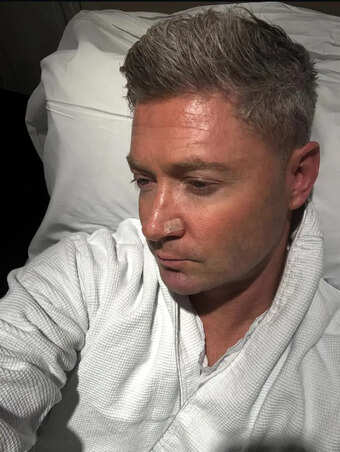
Australia has some of the highest rates of skin cancer on the planet because of high levels of UV radiation. However, Clarke's experience sounds off far beyond his native soil. In the United States alone, more than 5 million instances of skin cancer are treated annually, the American Cancer Society says.
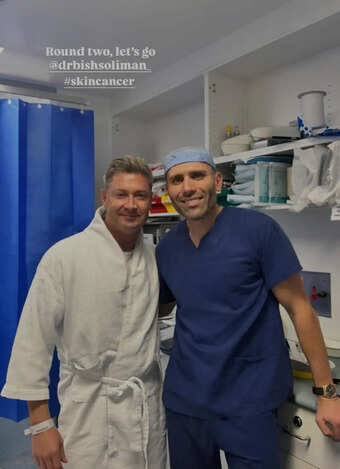
What Is Skin Cancer?
Skin cancer occurs when skin cells grow out of control, penetrating surrounding tissue and occasionally spreading to other organs. The sun's ultraviolet (UV) light is the primary cause, though indoor tanning is also a culprit. There are three types of skin cancer with varying risks and appearances:
Also Read: Measles Alert Issued In Brisbane After Traveller Returning From Bali Tests Positive
Basal Cell Carcinoma (BCC): The most frequent one. BCC typically appears as a flesh-colored bump, pearl-like growth, or pinkish lesion. It usually develops on sun-exposed sites such as the face, neck, and arms. Although it does not spread much, if left untreated, it can produce extensive local destruction.
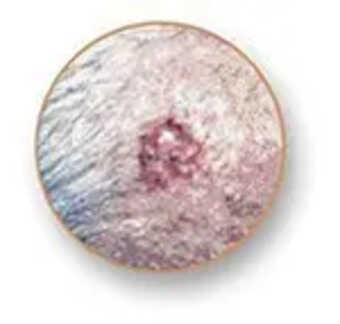
Squamous Cell Carcinoma (SCC): The second most frequent type. SCC can be a hard red bump, scaly area, or sore that closes up and reopens. It often occurs on sun-exposed areas like the ears, lips, and face. If left alone, SCC can grow and invade deeper tissues.
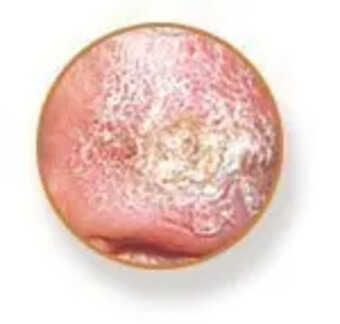
Melanoma: The most life-threatening form. Melanoma can develop in a pre-existing mole or as a new dark spot that appears different from surrounding markings. It grows more quickly than other skin cancers, so catching it early is paramount.
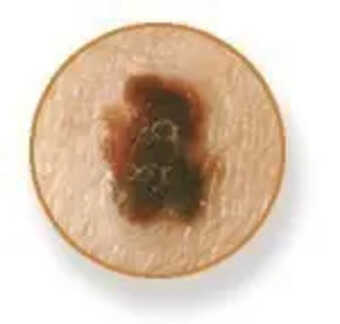
SCC can develop from a precancerous skin growth: Actinic keratoses are primarily caused by cumulative sun exposure and tend to develop on areas of the body that get the most sunlight, including the face, scalp, neck, hands, and forearms. People with fair skin are more likely to develop these patches, but they can occur in anyone with a history of significant sun exposure.
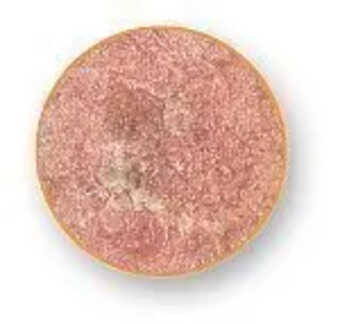
What Does Skin Cancer Look Like?
One of the difficulties with skin cancer is that its early signs are simple to overlook or assume to be harmless. However, being in a position to recognize these alterations can be the difference between life and death. General warning signals are:
- A new growth that looks like a mole, bump, or scab.
- An open sore that does not heal.
- A patch of skin that is rough or scaly.
- Alterations in a mole getting larger, darker, or becoming irregular in shape.
- Persistent itching or pain around a skin spot.
Doctors recommend following the ABCDE rule for melanoma:
Asymmetry: One half doesn’t match the other.
Border: Edges are irregular or blurred.
Color: Uneven colors—brown, black, red, or white patches.
Diameter: Larger than 6mm (about the size of a pencil eraser).
Evolving: Any mole or spot that changes in shape, size, or symptoms.
Where Skin Cancer Can Appear?
Most individuals think that skin cancer only occurs on sun-exposed skin. Although it is correct that the scalp, face, neck, arms, and hands are the most susceptible, cancers can occur on less visible locations:
- Under the toenail or fingernail.
- On the palms or soles of the feet.
- Around the genitals.
- On the back, which individuals might seldom examine themselves.
This is particularly the case for individuals with darker skin. In these individuals, melanoma and other types tend to appear on less sun-exposed areas, i.e., under nails or on the feet.
Who Is at Greatest Risk?
Anyone may get skin cancer, but certain individuals have a higher risk based on specific characteristics. People with fair skin, light hair, and light eyes are at greater risk, as are those with past histories of severe sunburns, particularly blistering. Frequent sun exposure with poor protection and tanning bed use also increase the risk of skin cancer. An inheritance pattern of the illness or compromised immune system further increases the risk. Michael Clarke's years of cricket playing in the strong Australian sunlight emphasize how long-term exposure to the sun can dramatically raise the risk of skin cancer.
Is Skin Cancer Preventable?
While you cannot alter your genes or your skin type, you can lower your risk considerably:
- Use sunscreen daily with SPF 30 or better. Apply every two hours when you're outside.
- Wear protective gear, wide-brimmed hats, sunglasses, and long sleeves.
- Seek shade between 10 a.m. and 4 p.m. when the sun's rays are strongest.
- Steer clear of tanning beds, which release cancer-causing UV radiation.
- Have your skin checked regularly, both at home and by a dermatologist.
Clarke's focus on early diagnosis is echoed in medical guidance: the sooner you detect changes, the greater the potential for effective treatment.
Why Regular Checkups Are So Important?
Skin cancer often develops silently. A small bump today may not cause pain but could evolve into something dangerous over time. Clarke’s case illustrates why vigilance is critical even after previous treatments. Recurrence is possible, and only regular screenings can catch issues before they progress.
The American Academy of Dermatology recommends annual full-body skin checks for most adults, and more frequent exams for those with higher risk factors.
Michael Clarke's candor regarding his diagnosis puts a spotlight on a public health problem that affects the entire world. His tale is not merely that of an athlete undergoing another surgery it is a reminder to all, wherever they may be in the world, that skin cancer exists, is prevalent, and is frequently preventable.
Hand, Foot And Mouth Disease Strikes U.S. Day-Cares: What Parents Must Know
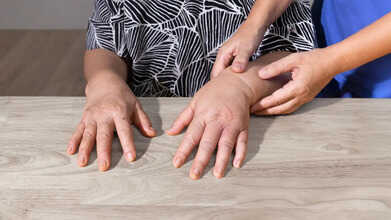
Credits: Canva
Health authorities have reported an active outbreak of hand, foot and mouth disease in Tennessee, impacting close to 200 children and staff members across multiple schools.
In its latest update on Monday, October 20, the Shelby County Health Department confirmed that 178 cases have been identified among students and staff in 31 schools and three daycare centers.
What Is Hand, Foot And Mouth Disease?
Health officials in Tennessee have issued a warning about a “highly contagious” illness spreading through several schools and childcare facilities.
The Shelby County Health Department confirmed in a recent statement that an outbreak of hand, foot and mouth disease (HFMD) has been detected across 31 schools and three childcare centers in the state.
According to the Centers for Disease Control and Prevention (CDC), hand, foot and mouth disease is a contagious viral infection that typically leads to fever, mouth ulcers, and a skin rash. Although it most often affects children under the age of five, people of any age can contract it. Symptoms usually persist for about a week to ten days.
The CDC explains that the virus spreads easily through droplets released when an infected person coughs, sneezes, or talks, as well as through contact with contaminated objects, surfaces, or fluid from blisters.
Symptoms Of Hand, Foot And Mouth Disease
Hand, foot and mouth disease (HFMD) usually develops in two stages. In the beginning, children often experience mild, flu-like symptoms such as a low fever, sore throat, runny nose, stomach discomfort, and loss of appetite. These early signs typically subside after a few days, followed by the appearance of an itchy rash on the palms, soles, elbows, knees, or buttocks, along with painful mouth sores that may form on or around the tongue, as per Cleveland Clinic.
These sores usually start as small pink spots before turning into blisters, and some children may also develop swollen lymph nodes in the neck. Most cases clear up within a week to ten days, though recovery can take longer in children under two years old.
What Causes Hand, Foot And Mouth Disease?
The illness is caused by viruses from the coxsackievirus and enterovirus families, which are commonly found in the mouth and digestive tract. HFMD is highly contagious, especially in the first few days of infection and often before the rash appears. While the blisters usually dry up within ten days, the virus can linger in stool for several weeks, meaning children may still spread it after symptoms have disappeared. The infection spreads through droplets released when an infected person coughs or sneezes, through direct contact with saliva, stool, or fluid from blisters, and by sharing utensils, cups, or towels. It can also spread by touching contaminated toys, surfaces, or doorknobs and then touching the mouth, nose, or eyes.
The Shelby County Health Department stated that it has been working closely with schools and childcare centers to track the outbreak and reduce the spread of the infection.
Dr. Bruce Randolph, Director and Health Officer of the department, noted that while most cases of hand, foot and mouth disease are mild, the virus can spread rapidly in group settings such as classrooms and daycare facilities. He advised parents to keep affected children at home until their fever has subsided, they are feeling better, and their mouth sores or blisters have started to heal.
Covid Could Be Causing Women To Age Faster; Here’s What Scientists Found
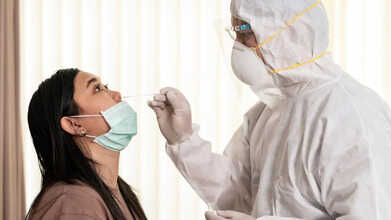
Credits: Canva
Covid could have accelerated arterial ageing by up to five years, with women experiencing the greatest impact, according to groundbreaking research. The study revealed that even mild Covid infections can stiffen blood vessels, a change normally linked to aging, which increases the risk of heart attacks, strokes, and other cardiovascular issues.
Encouragingly, vaccinated individuals generally showed less arterial stiffness compared to those who were unvaccinated. Study leader Professor Rosa Maria Bruno explained that many people affected by Covid continue to experience symptoms months or even years later, and researchers are “still uncovering how the virus triggers these lingering effects.”
The findings follow advice from an emergency doctor who recently highlighted a simple five-second test that could indicate heart problems.
Early Vascular Ageing Explained
Professor Bruno said: “We know Covid can directly impact blood vessels. This can lead to what we term early vascular aging, meaning your arteries are older than your actual age, increasing susceptibility to heart disease. Identifying at-risk individuals early is crucial to preventing heart attacks and strokes.”
How the Study Was Conducted
The research included 2,390 participants from 16 countries, including the UK and the US. Conducted from September 2020 to February 2022, participants were divided into four groups: those who never contracted Covid, those with recent mild infections who were not hospitalised, patients admitted to general wards, and the most severe cases treated in intensive care.
Stiffer Arteries Found Across All Covid Groups
The results were striking as all Covid-infected groups, including those with mild infections, showed stiffer arteries than people who had never been infected. Women were more affected than men, and individuals with long Covid symptoms like fatigue and shortness of breath showed the strongest vascular changes.
Reassuringly, vaccinated participants had less stiff arteries than unvaccinated ones, and over time, the Covid-related vascular ageing tended to stabilise or slightly improve.
How Arterial Stiffness Was Measured
Researchers determined vascular age by measuring how fast a blood pulse travels from the carotid artery in the neck to the femoral arteries in the legs, using a device to calculate carotid-femoral pulse wave velocity (PWV). A higher PWV indicates stiffer blood vessels and a higher vascular age. Measurements were taken six months after infection and repeated at 12 months. The analysis accounted for participants’ sex, age, and other cardiovascular risk factors.
The study found that PWV increased in women by 0.55 metres per second for mild Covid cases, 0.60 for hospitalised women, and 1.09 for those in intensive care. Researchers note that an increase of 0.5 metres per second is “clinically significant,” roughly equivalent to five years of vascular ageing, and raises the cardiovascular risk by 3 percent in a 60-year-old woman.
How Covid Affects Blood Vessels
Professor Bruno from Université Paris-Cité explained: “Covid-19 targets angiotensin-converting enzyme 2 receptors found on blood vessel linings. By entering these cells, the virus can cause vascular dysfunction and speed up arterial ageing. Our immune and inflammatory responses, which normally protect against infection, may also contribute to this damage.”
Covid Could Be Causing Women To Age Faster
Discussing the sex differences, she added: “Women generally mount a faster, stronger immune response, which helps defend against the infection. However, this same response can sometimes increase damage to the blood vessels after the virus has passed.”
The study found that Covid’s impact extends far beyond the respiratory system, silently affecting blood vessels and accelerating vascular aging, especially in women. While vaccination appears to offer some protection, awareness and early monitoring of heart health are important.
Atorvastatin Recall: Popular Cholesterol Medicine Pulled From Pharmacies – What You Need To Know
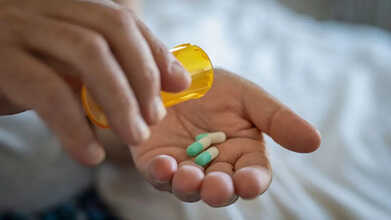
Credits: Canva
Over 140,000 bottles of a prescription statin have been pulled from the market due to “failed dissolution specifications,” according to a report by the U.S. Food and Drug Administration (FDA). Ascend Laboratories, based in New Jersey, recalled Atorvastatin Calcium, a generic version of Lipitor, manufactured by Alkem Laboratories of India and distributed across the country. The recall covers tablets in 90-count, 500-count, and 1,000-count bottles with expiration dates extending to February 2027.
Atorvastatin Recall: Why Is The Popular Cholesterol Medicine Being Recalled?
On October 10, 2025, the FDA classified the recalled drug as a Class II recall. This classification means the medication could cause “temporary or medically reversible adverse health effects,” though the likelihood of serious harm is considered “remote.”
Statins are widely prescribed to manage high cholesterol and to prevent or reduce heart disease, according to a 2023 study from Florida Agricultural and Mechanical University.
Dr. Tamanna Singh of the Cleveland Clinic noted on a September podcast that roughly “39 million adult Americans” take statins, with the largest group being over 40. She added that Lipitor, Crestor, and their generics, atorvastatin and rosuvastatin, are the most commonly prescribed medications in this class.
Atorvastatin Recall: Why This Cholesterol-Lowering Drug Recall Matters
Most drug recalls are initiated by the manufacturers themselves, and this appears to be the case here. The recalled product is made by New Jersey-based Biocon Pharma, Inc. “Recalls are typically initiated voluntarily by companies before they notify the FDA,” explained Dr. Ileana Elder, Branch Chief in the Incidents, Recalls, and Shortages Branch at the FDA’s Center for Drug Evaluation and Research, in a 2024 Q&A.
Atorvastatin Recall: What Should People Do With the Recalled Medication?
Neither the FDA nor the companies have issued detailed instructions on handling the recalled tablets. GoodRx advises anyone affected by a recall to check their medication’s lot number, contact their pharmacy, reach out to their prescriber, and properly dispose of the recalled medication.
Statins like atorvastatin are among the most commonly prescribed drugs for lowering “bad” cholesterol and reducing heart disease risk, meaning many adults could be affected. A failure in dissolution means the medication may not deliver the correct dose, which can compromise treatment effectiveness, particularly for those relying on consistent cholesterol control.
The recall being classified as Class II (risk of temporary or reversible harm) highlights that the risk is serious but not immediately life-threatening. Because generic medications are widely used and often more affordable, many patients may not realise their specific bottle is impacted and may continue taking it, assuming it is safe.
Atorvastatin Recall: How to Check if Your Bottle Is Affected
Check your prescription bottles for the manufacturer, lot number, and bottle size listed in the FDA notice.
If your medication is part of the recall, do not stop taking it suddenly—contact your healthcare provider for guidance and request a replacement or alternate formulation. Keep any affected bottles separate, and avoid sharing your medication, as only specific batches have been flagged. Always store your medications correctly, and check with your pharmacy at each refill to ensure the lot and manufacturer are free of recalls.
© 2024 Bennett, Coleman & Company Limited

